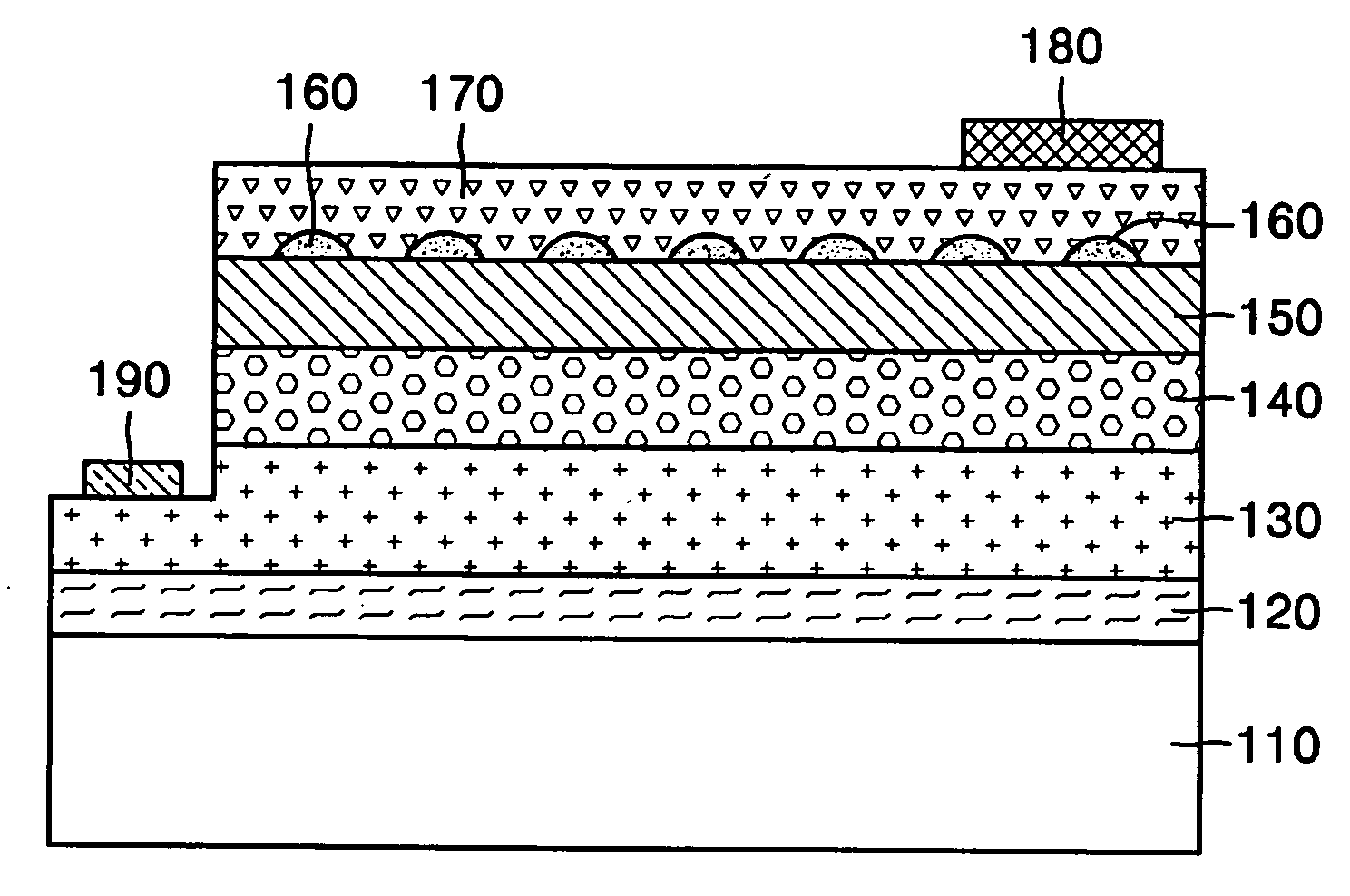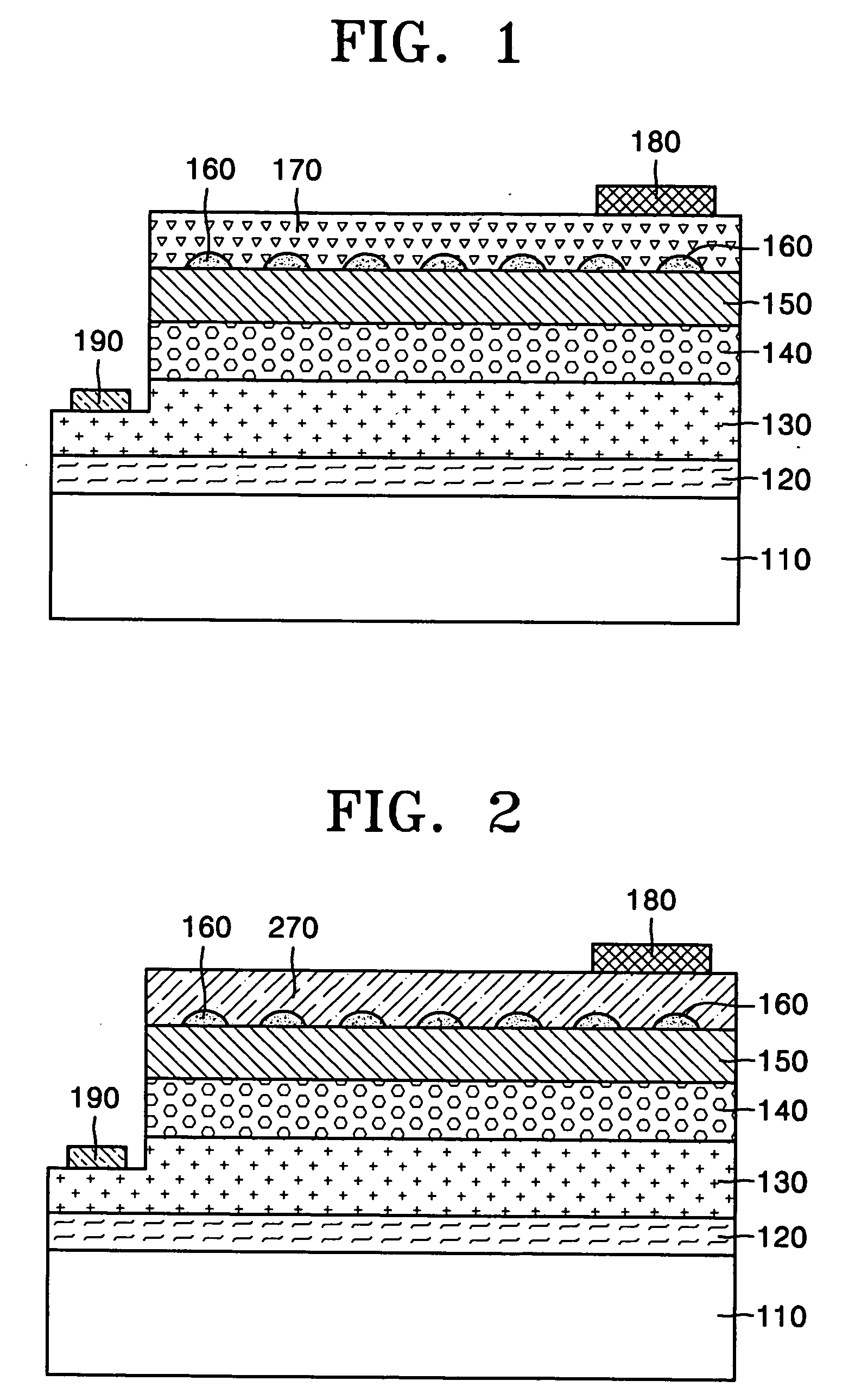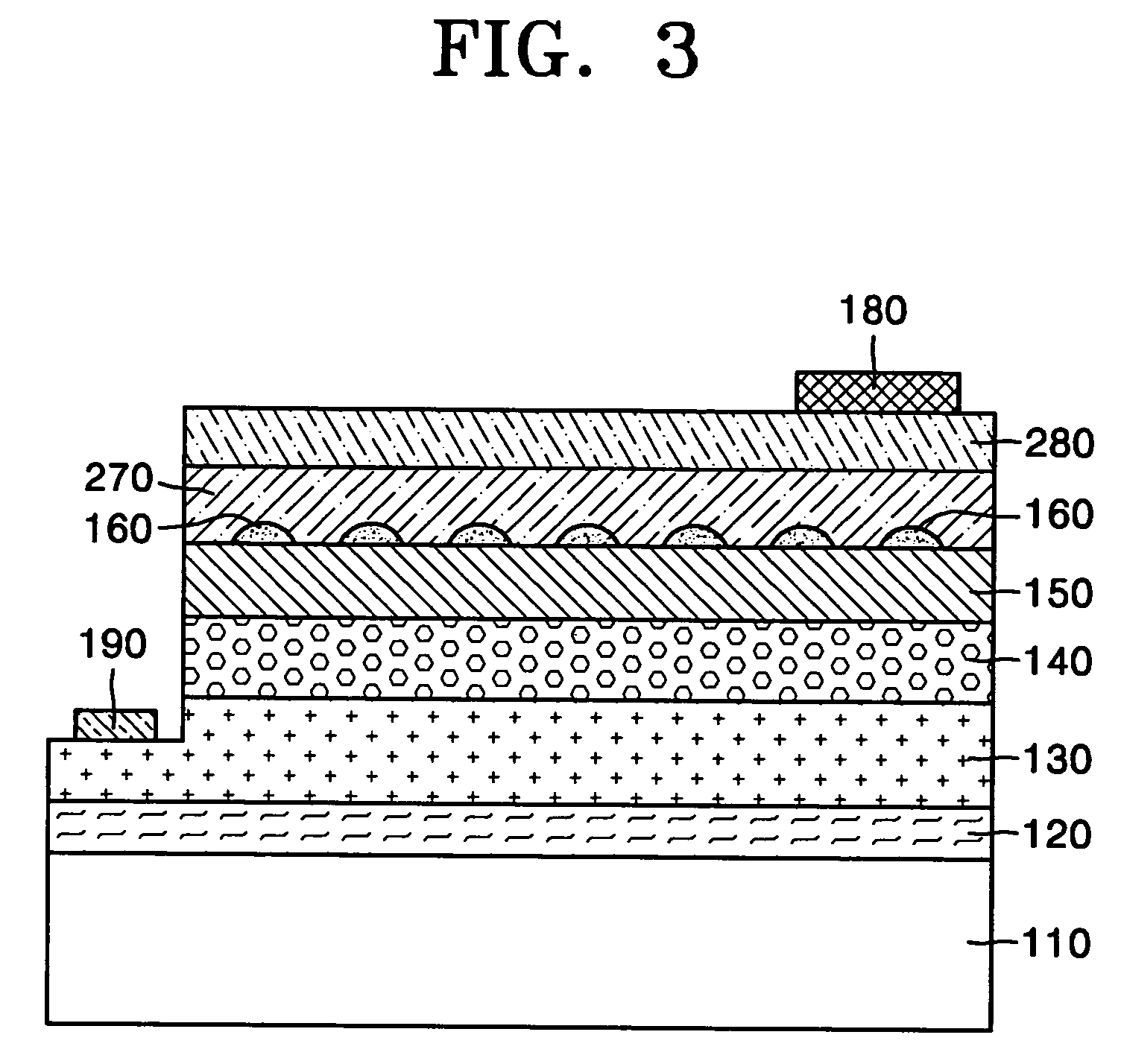Nitride-based light-emitting device and method of manufacturing the same
a light-emitting device and nitride-based technology, which is applied in the direction of solid-state devices, lasers, semiconductor lasers, etc., can solve the problems of low light utilization efficiency, and inability to develop a p-ohmic electrode layer suitable for a tled or fled structure, and achieve low sheet resistance and low specific ohmic contact resistance. , the effect of preventing degradation of performan
- Summary
- Abstract
- Description
- Claims
- Application Information
AI Technical Summary
Benefits of technology
Problems solved by technology
Method used
Image
Examples
first embodiment
[0039] Referring to FIG. 1, a nitride-based light-emitting device according to the present invention includes a substrate 110, and a buffer layer 120, an n-cladding layer 130, an active layer 140, a p-cladding layer 150, a grid cell layer 160 and a transparent ohmic contact layer 170 sequentially formed on the substrate 110. The nitride-based light-emitting device further includes a p-electrode pad 180 and an n-electrode pad 190.
[0040] The nitride-based light-emitting device is mainly divided into a light-emitting structure including the substrate 110, the buffer layer 120, the n-cladding layer 130, the active layer 140, and the p-cladding layer 150 and a p-electrode structure including the grid cell layer 160 and the transparent ohmic contact layer 170 formed on the p-cladding layer 150. The substrate 110 may be formed from sapphire (Al2O3), silicon carbide (SiC), Si, or gallium arsenide (GaAs). Optionally, the buffer layer 120 may not be formed.
[0041] Each of the layers from the ...
second embodiment
[0053]FIG. 2 is a cross-sectional view of a nitride-based light-emitting device according to the present invention. Referring to FIG. 2, a reflective ohmic contact layer 270 is used as an ohmic contact layer to form a flip-chip structure. Like reference numerals in the drawings denote like elements.
[0054] The reflective ohmic contact layer 270 may be formed in a single layer or multilayers using Au, Ru, Cr, Rh, Sc, Zn, Mg, Ag, Al, or an alloy or solid solution containing at least one selected among the above metals. The reflective ohmic contact layer 270 may also be formed to a thickness of 10 to 1,000 nm.
[0055]FIG. 3 is a cross-sectional view of a nitride-based light-emitting device according to a third embodiment of the present invention. Referring to FIG. 3, the nitride-based light-emitting device according to the third embodiment of the present invention further includes an agglomeration preventing layer (APL) 180 that is formed on the reflective ohmic contact layer 270 and pre...
PUM
 Login to View More
Login to View More Abstract
Description
Claims
Application Information
 Login to View More
Login to View More - R&D
- Intellectual Property
- Life Sciences
- Materials
- Tech Scout
- Unparalleled Data Quality
- Higher Quality Content
- 60% Fewer Hallucinations
Browse by: Latest US Patents, China's latest patents, Technical Efficacy Thesaurus, Application Domain, Technology Topic, Popular Technical Reports.
© 2025 PatSnap. All rights reserved.Legal|Privacy policy|Modern Slavery Act Transparency Statement|Sitemap|About US| Contact US: help@patsnap.com



